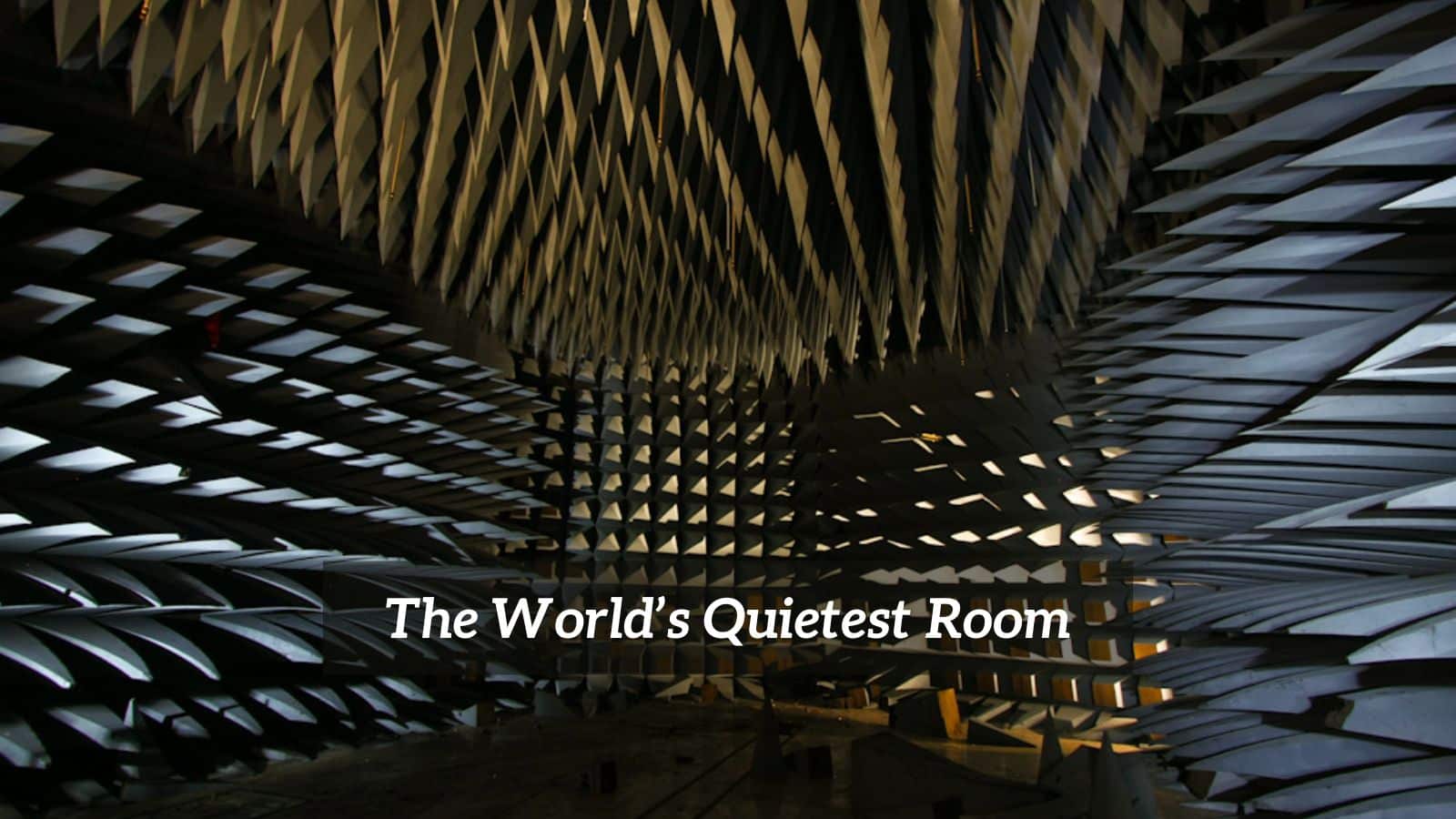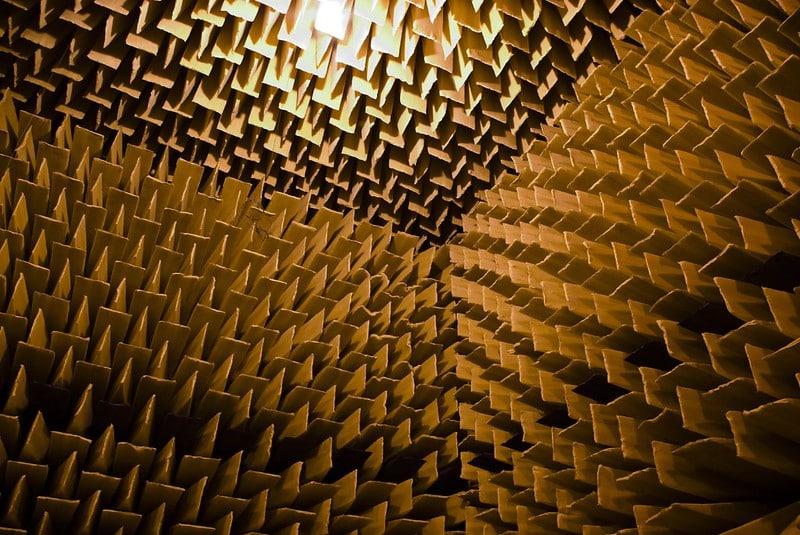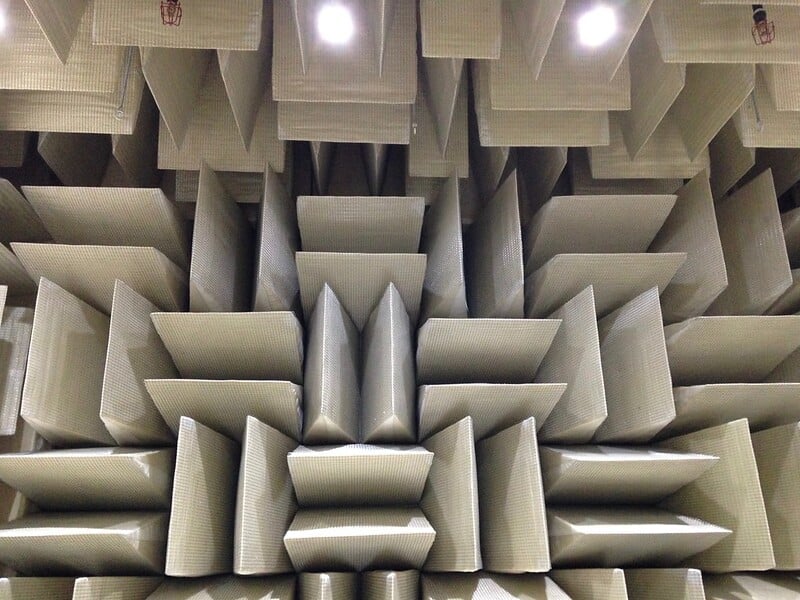
In today’s hurry and hustle world where it sometimes feels as if there is never a quiet moment, you may be glad to know there is a place where they claim there is no sound at all. Can you imagine what that would be like?
Perhaps not as easy as you might first think. Pause for a moment whilst you’re reading this and listen to the plethora of sounds around you.
If you listen intently you may hear the finest detail of what you are surrounded by from passing trains to the beating of a hummingbird’s wings. Chances are there is certainly not total silence.
The World’s Quietest Room
What scientists have created in Orfield Laboratories in Minnesota is something described as an anechoic chamber. It doesn’t sound particularly appealing by name alone, but what it is is supposedly the quietest room on earth.
Orfield Laboratories is not only famous for this relatively recent creation but as the first digital recording studio to emerge in the world. The acoustic laboratories were added later around 1995, where the anechoic chamber resides.
‘Sound 80 Studios’ as they were initially known was a place that has seen its fair share of celebrity musicians. Bob Dylan recorded ‘Blood on The Tracks’ there and other names include Prince, Cat Stevens and jazz pianist and composer, Dave Brubeck.
So, what is an anechoic chamber? In a nutshell, it is a room carefully designed to stop any sound or electromagnetic waves. The term anechoic chamber came from an acoustic expert and MIT professor called Leo Beranek and is Latin for ‘no echoes’.
One of his seminal texts was a book he titled “Acoustics: Sound Fields and Transducers” from 2012. These chambers are used for a variety of tests from loudspeakers to domestic appliances like hoovers.
There are agreed levels of sound at which a chamber can be given the title of an anechoic chamber and these change as technology advances.
I believe the acceptable noise level is around 10 – 20 dBA. The Orfield Lab anechoic chamber has a measurement of 9.4 dBA and they challenge anyone to stay in the chamber for more than 45 minutes.
Microsoft smashed the 2005 record noise level of -9.4dBA in 2015. They produced a chamber that achieved a new world record with a noise level set to an unimaginable -20.6 dBA.
These figures don’t mean much to us humans as our hearing rarely stretches beyond 0 dBA meaning that in a chamber like the Microsoft one, we could find the experience quite unnerving.
How this remarkable level of noise is achieved requires sophisticated engineering and acoustics together with an impressive grasp of mathematics.
If you take a moment to look at the inside of an anechoic chamber what you’ll probably see are walls of sharp triangles that look a little like the sort of trap you might see in a 1930s horror movie.
These triangular wedges are specifically shaped to cause sound waves to behave in a certain way which effectively means that they lose their acoustic energy. The foam type of material used in these chambers makes a considerable difference to this dissipation of sound.
There are as you might expect several anechoic chambers across the world and even though the levels recorded at the Orfield Labs are impressive Microsoft still, as far as I can discover, has the record to date.
Other anechoic chambers that are conducting acoustic research and testing include the National Acoustic Laboratories in Chatswood, Sydney, Australia but even the brilliance of the scientists there hasn’t topped the Microsoft achievement.
The Microsoft project came with a price tag of $1.5 million and that’s just for the means to control the sound in the chamber. ‘Building 87’ at Microsoft’s Headquarters, as the chamber is unassumingly named holds the Guinness World Record for the quietest room on earth.
The most accurate reading of the noise levels is -20.35 dBA. This is a long way below the threshold of the human ear.
Microsoft’s chamber is cosily nestled within six concrete layers, each around 12 inches thick. Any potential sound source from outside the chamber has almost no possibility of getting in. Every floor, ceiling and wall is covered in a unique fibreglass foam that further reduces the noise.
To ensure that the chamber has almost zero external sound Microsoft took the building of their chamber one giant step further. The whole construction floats on springs that attenuate any vibration and separate it from the rest of the building.
Microsoft claims that even a sound registering 120dB would struggle to get through to the inside of their anechoic chamber. That’s like having a rocket powering up outside and not being able to hear it.
As odd as this may seem, it makes sense if your objective is to test sound in a completely controlled environment.
Microsoft has not opened its anechoic chamber to the public as yet unlike the one at Orfield Laboratories. People who have taken on the Orfield challenge describe the experience in many ways.
For some the heightened awareness of every tiny, usually, unnoticed sound, becoming audible brings with it a deeply uncomfortable sensation. At Orfield, they will offer to extinguish the lights in the chamber too, to ensure you have the most authentic experience.
You will be acutely aware we read, of your heart beating, the sound of your eyes blinking, your swallowing and so many other tiny human nuances of sound that you may be fascinated or frightened.
Some have described the experience as being similar to the use of certain drugs, otherworldly and or heightened consciousness.
This is not a surprise as deprivation of the senses for any length of time can send the conscious mind into a frenzy of creative construction to try and make sense of what is happening.
Interestingly, those people who are diagnosed with conditions such as ADHD, Autism and particular anxieties seem to find the chamber calming, even peaceful. If you’re in the area of Minnesota, USA, give it a try and see if you can beat the current 45-minute record.



This is a very interesting article topic but poorly thought out in terms of establishing basics. There seems to be a number of assumptions on the author’s part that every musician – or just anyone that might read this article – understands what dB’s are. As a musician (and engineer) myself, I’ve meet some very competent musicians that have no grasp at all of this aspect of sound. In short, not everyone knows what a dB is, let alone what “dBA” means, or what “0 dBA” vs ” -20 dBA” vs “120 dB” represents. As a matter of due diligence it would have been helpful for the audience to explain what these units of measurement are starting with the basics and explain what a dB is and represents. Similarly, the article mentions that Microsoft has an Anechoic chamber in Minnesota but provides no further information? I found a link to it doing a search, but why couldn’t the author included a link as part of the article ? I don’t mean to sound overly critical, but I hate reading articles that are for the most part worth reading and interesting, as this one is, but make major assumptions on the part of the reading audience. In any case, in view of the issues, it’s a topic worth reading about and exploring further.